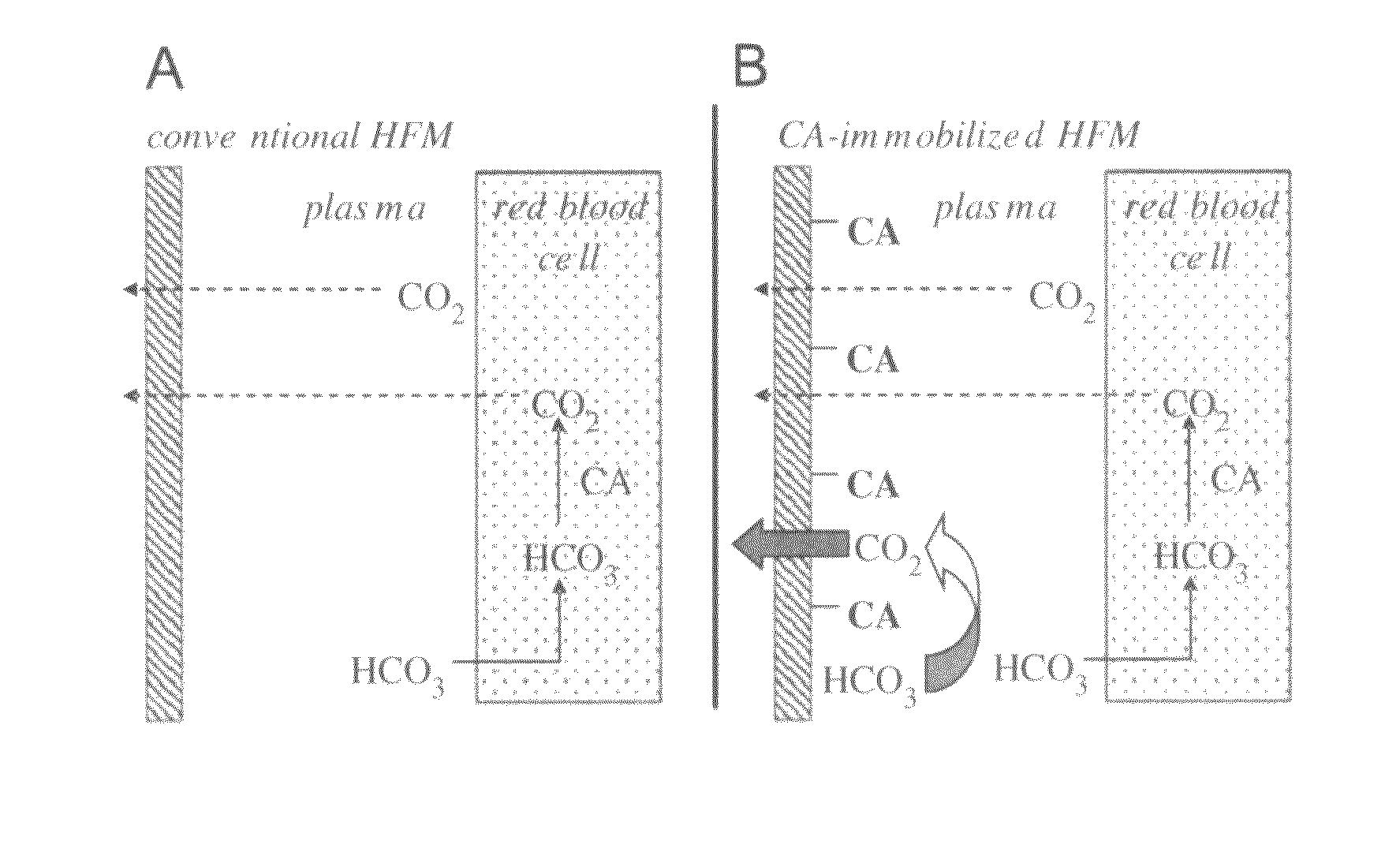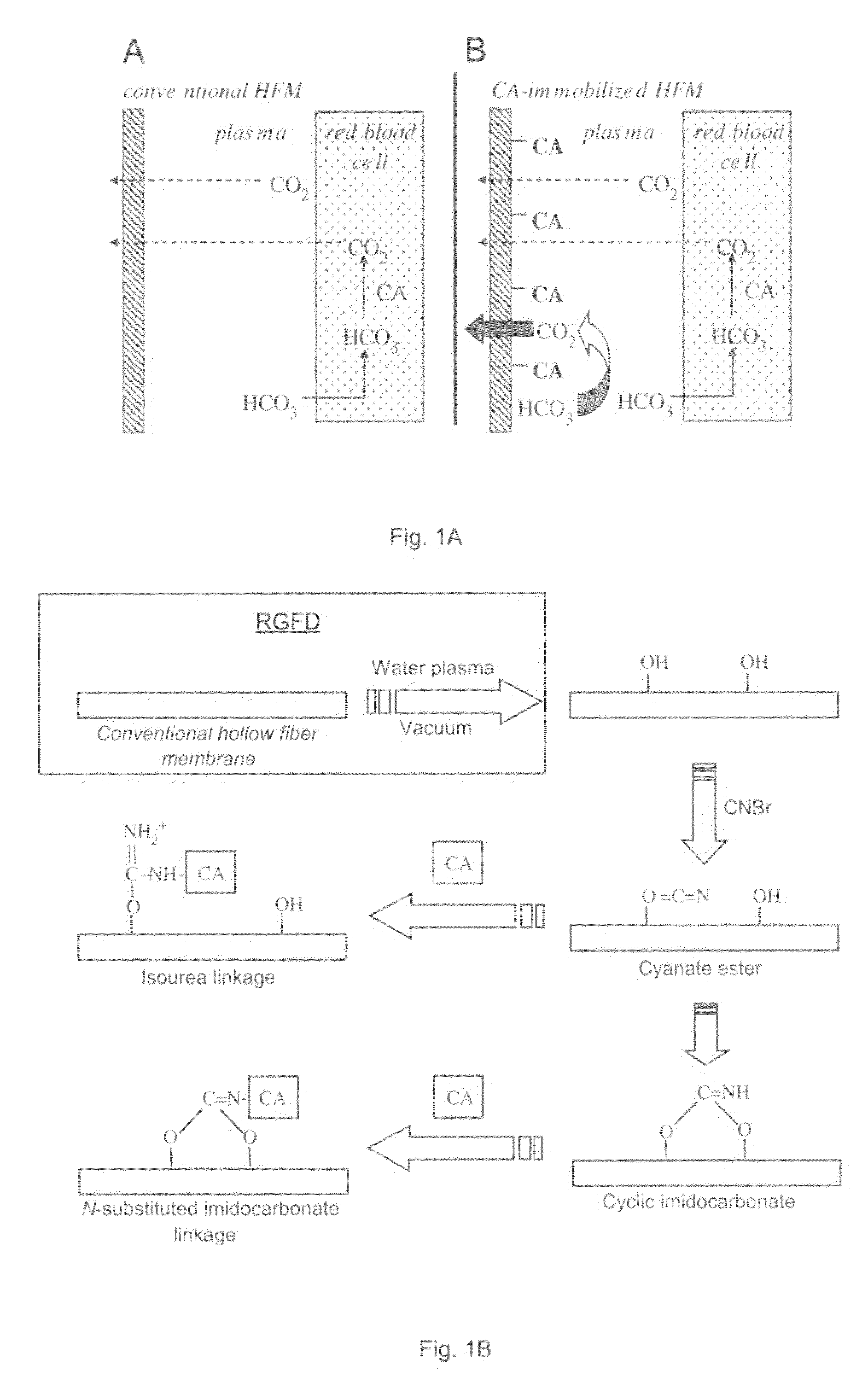Devices, systems and methods for reducing the concentration of a chemical entity in fluids
a chemical entity and fluid technology, applied in the field of devices, systems and methods for reducing the concentration of chemical entities, can solve the problems of insufficient permeation of the membrane, inability to achieve early oxygenation, and inability to achieve intravenous oxygenation, etc., to achieve significant improvement in easy incorporation or retrofitting, and the effect of improving the rate of co2 removal
- Summary
- Abstract
- Description
- Claims
- Application Information
AI Technical Summary
Benefits of technology
Problems solved by technology
Method used
Image
Examples
experimental examples
[0123]Materials. Carbonic anhydrase (CA) from bovine erythrocytes was purchased from Sigma-Aldrich (St. Louis, Mo.) and used without further purification. Polymethyl-pentane (PMP) hollow fiber membranes (Oxyplus, Type PMP 90 / 200, OD: 380 μm, ID: 200 μm) were obtained from Membrana GmbH (Wuppertal, Germany). All other reagents were purchased from Sigma-Aldrich (St. Louis, Mo.) and were of analytical grade or purer.
[0124]CA Immobilization. PMP HFMs (Oxyplus, Type PMP 90 / 200, OD: 380 μm, ID: 200 μm) were used as the substrate for CA immobilization. Initially, the HFMs were treated by RFGD (GCM-250, March Plasma Systems, Concord, Calif., see FIG. 9L) using water as a plasma source. A range of plasma discharge powers (25, 50, and 100 W) and treatment time (30, 60, 90, and 180 s) were employed.
[0125]After RFGD treatment, the modified fibers were immersed in a 2 M Na2CO3 solution (no pH adjustment). CNBr (1 g / mL in acetonitrile) was added to the buffer solution to a final concentration of ...
PUM
| Property | Measurement | Unit |
|---|---|---|
| reaction rates | aaaaa | aaaaa |
| power | aaaaa | aaaaa |
| power | aaaaa | aaaaa |
Abstract
Description
Claims
Application Information
 Login to View More
Login to View More - R&D
- Intellectual Property
- Life Sciences
- Materials
- Tech Scout
- Unparalleled Data Quality
- Higher Quality Content
- 60% Fewer Hallucinations
Browse by: Latest US Patents, China's latest patents, Technical Efficacy Thesaurus, Application Domain, Technology Topic, Popular Technical Reports.
© 2025 PatSnap. All rights reserved.Legal|Privacy policy|Modern Slavery Act Transparency Statement|Sitemap|About US| Contact US: help@patsnap.com



